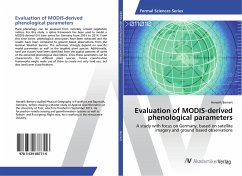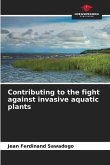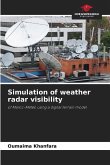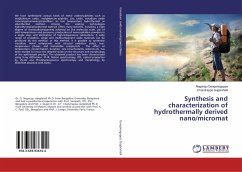Plant phenology can be assessed from remotely sensed vegetation indices. For this study, a spline framework has been used to model a MODIS-derived EVI time series for Germany from 2001 to 2014. From this time series, phenological descriptors have been extracted and the results have been compared to ground based observations from the German Weather Service. The outcomes strongly depend on specific model parameters as well as the targeted plant species. Additionally, land use classes have been identified from the spatial patterns of some of the extracted phenological descriptors. Since these parameters can be characteristic for different plant species, future classification frameworks might make use of them to create not only land use, but also land cover classifications.
Bitte wählen Sie Ihr Anliegen aus.
Rechnungen
Retourenschein anfordern
Bestellstatus
Storno








